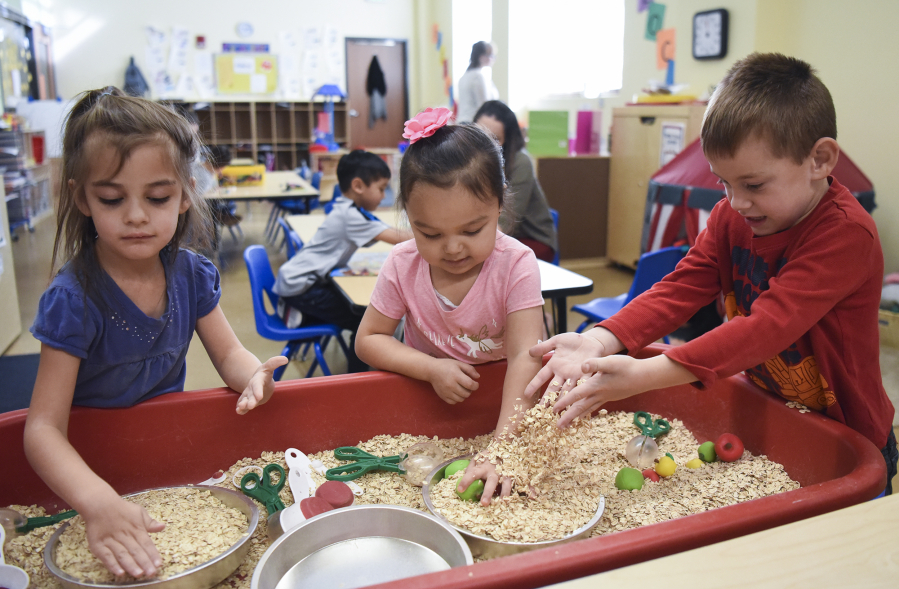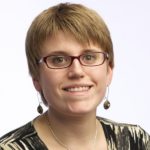A cheery group of children at Hough Early Learning Center held hands as they balanced on a log in the playground Friday.
They took turns as rider and passenger on a tricycle with a back seat. A small group played in a container filled with dry oatmeal, plastic fruit and pie tins, showing off the imaginary pies they’d made.
It’s this sharing and collaborating that teachers and staff at the Vancouver campus say makes this group of students special. This is the blended learning preschool program at the Early Childhood Education and Assistance Program, a state-funded preschool program for low-income families.
Half the slots in the blended classroom are for disabled students, whose preschool education must be provided by the school district under federal law, while half the slots are for ECEAP students. Educational Services District 112, an ECEAP administrator, piloted the program last year and added a second class this year.
“Children with delays and disabilities have opportunities to learn from their peers who don’t,” said Jackie Brock, education and school readiness manager for ESD 112.
Adding opportunities
When Hough Elementary School Principal Steve Vance was a director for special education programs, his team grappled with how to give disabled students more opportunities to play and learn with general education students.
That’s the ultimate goal, he said, as students who are developmentally delayed or disabled prepare to enter kindergarten.
“The more we have special education students in with general education students, the more social and emotional models they’re going to have,” he said.
ESD 112’s blended learning program is a step toward that solution. While special education students are learning how to engage in a larger group of children than they’re used to, general education students are learning leadership skills and empathy, Brock said.
“They learn how to be a helper,” Brock said.
There are nine students in special education teacher Justine Johnston and ECEAP teacher Stefani Johnson’s afternoon class. The students, ages 3 to 5, are all expected to enter general education classes once they reach kindergarten. Kelly Mainka, an early learning specialist for the district, said the program helps special education students prepare for that step.
Kindergarten readiness
Office of Superintendent of Public Instruction data say that special education students in Southwest Washington are disproportionately unprepared to enter kindergarten, with 19 percent of special education students considered school ready at the beginning of their first year compared to 42 percent overall. Organizers of the blended program say the class is helping to bridge that gap.
The class gives general education students a chance to become leaders in class, Johnson said, and model good behavior for their peers whose social and cognitive abilities are delayed.
“A lot of it is language, sharing, taking turns,” Johnson said.
Vance added that the general education students are learning more than their letters and numbers. They’re learning to accept and appreciate a diverse group of students.
“It’s not just about literacy and math, it’s about language, the empathy, the tolerance,” he said.




